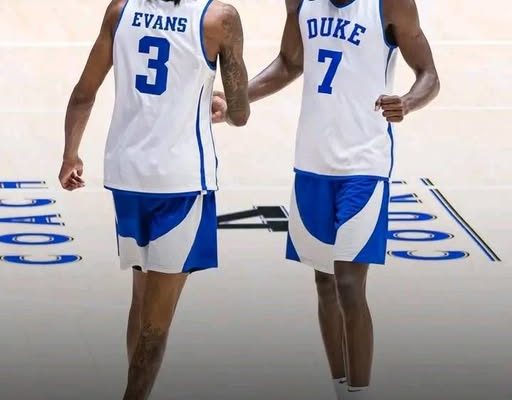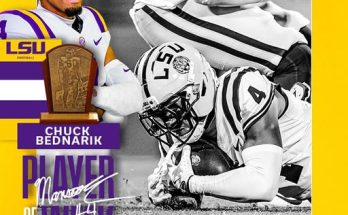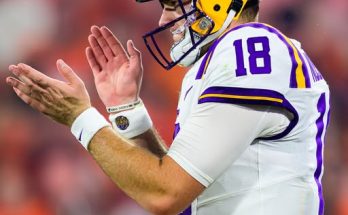Duke University has long been a bastion of college basketball excellence, producing legends and cultivating a legacy that has touched every corner of the sport. From Coach K’s hall-of-fame tenure to one-and-done superstars like Zion Williamson and Kyrie Irving, the Blue Devils have never been strangers to the spotlight. But there’s a new phenomenon erupting from Durham, one that goes far beyond highlight reels and NBA draft boards. They’re being called the “Crash Out Bros,” and they’re not just making waves — they’re threatening to completely upend the hierarchy of college basketball as we know it.
The term “Crash Out Bros” started as a quiet joke among student sections and social media forums, but it has become a legitimate cultural force. These are the players who play like they have nothing to lose and everything to prove. They dive for loose balls, talk trash without fear, take charges like they’re trying to absorb the whole arena’s energy, and erupt with emotion after every defensive stop. Think the heart of Draymond Green, the fearlessness of Allen Iverson, and the swagger of the Fab Five — all wrapped into a new generation of Duke athletes who have weaponized chaos into a game plan.
What’s striking about this new Duke crew is that they’re not necessarily the most polished. They’re not headlining NBA mock drafts or being pampered as future lottery picks. But they own the floor. They wreak havoc on opposing offenses and force opposing fanbases to hate them — which is exactly how they like it. This Duke squad doesn’t walk into gyms looking to impress scouts; they storm in with the audacity to take the game by force, and they leave with W’s, bruises, and often, the broken spirits of opponents.
Behind this culture shift is a core group of players that have embraced the “crash out” mentality. They were not promised stardom, and some weren’t even expected to crack the starting lineup, but they’ve found brotherhood and strength in going all out, all the time. These are players like sophomore guard Tate McKenzie, who spent his freshman year riding the bench and studying defensive tape like it was gospel. Now, he’s become the emotional engine of Duke’s press-heavy schemes. His full-court pressure has made opposing ball handlers visibly uncomfortable. McKenzie isn’t afraid to get into someone’s jersey, to take a hard screen, or to let the crowd know exactly how many seconds are left on the shot clock. He’s earned the respect of teammates and has drawn comparisons to classic Duke firebrands like Steve Wojciechowski and JJ Redick — but even more rugged.
Then there’s KJ Hammond, a transfer forward from a mid-major program who went largely unnoticed during his recruiting days. Now he’s leading the ACC in rebounds per 40 minutes. Hammond doesn’t have a silky jumper or NBA range, but he fights like every board is the last possession of his life. He’s the first to contest a shot and the last to leave the floor during warm-ups. His sheer will has become infectious; he’s a walking embodiment of the crash out ethos.
Even more remarkable is how this approach has affected Duke’s national standing. Early-season polls and pundits wrote this team off as middle-of-the-pack talent, lacking the star power and finesse of previous Blue Devil lineups. But now, midway through the season, they’ve pulled off several stunning upsets against ranked teams, out-hustling and out-gritting their way to national relevance. Their defense ranks among the top five in efficiency, and their forced turnover rate has skyrocketed. They don’t care if they win pretty — they care that their opponents walk away hating every second they spent on the court with them.
What’s also fueling the Crash Out Bros’ rise is the quiet revolution happening inside Duke’s locker room. Since the transition from Mike Krzyzewski to Jon Scheyer, the program has been recalibrating its identity. Scheyer, once a tactical floor general in his own right, has given these gritty players the green light to be as intense and chaotic as they need to be. Practices are no longer about polished sets and five-star finesse. They’re about winning 50/50 balls, screaming during scrimmages, and treating every possession like it’s the final moment of a national title game. Scheyer has not only embraced the crash out mentality — he’s amplified it.
This philosophy has started to attract a different type of recruit. Players who might have been passed over by blueblood programs are now eyeing Duke as a place where toughness is celebrated just as much as talent. They’re seeing that hustle can make headlines and that heart can outshine hype. For many of these young athletes, Duke has become more than a brand — it’s a proving ground.
And that’s what’s most terrifying for the rest of college basketball. When a historic powerhouse like Duke decides to lean into scrappiness instead of star power, it changes the rules of engagement. Teams that once out-shot Duke are now being outhustled. Coaches who planned for high screens and dribble drives are instead facing relentless traps and surprise double-teams. Fans who expected highlight dunks are witnessing gut-check blocks and floor burns.
The Crash Out Bros are also changing how fans interact with the sport. Social media is flooded with clips of the squad going berserk on the bench after drawing a charge, or mocking opponents with perfectly timed celebrations. They’ve become meme-worthy without ever chasing the spotlight — they earn it with pure, unfiltered effort. The narrative around Duke has shifted from elite prep school prodigies to unrelenting junkyard dogs, and college basketball is better for it.
Yet what really sets these guys apart is how they play for each other. This is not an ego-driven team. The players talk about sacrifice like it’s a privilege. They rotate like their lives depend on it. They slap the floor not for show, but because they believe that defense is an act of pride. They don’t crash out just for glory; they crash out because they’ve committed to each other. They’ve redefined “team-first” in an era that often celebrates individual stardom.
Their rise hasn’t come without controversy. Critics argue that this ultra-physical playstyle risks injury, or that the theatricality can veer into disrespect. But Duke’s players haven’t backed down. In postgame interviews, they’ve made it clear: if you don’t like the way they play, stop them. So far, very few teams have been able to.
Looking ahead, the basketball world is holding its breath to see what this group unleashes in March. If they keep winning, the Crash Out Bros might go from cult heroes to full-blown national icons. They’re the team you don’t want to face in a one-and-done scenario. They’re the nightmare matchup that no coach can fully prepare for. They are chaos personified, and they’re wearing Duke blue.
No matter how the season ends, this movement has already reshaped the program’s identity. Duke isn’t just a launchpad for NBA dreams anymore; it’s a battleground for competitors. Whether they win it all or not, the Crash Out Bros have sent a message: the age of polished dominance is giving way to the age of raw, relentless force. The next generation of players is watching. So are recruits. So are rivals.



